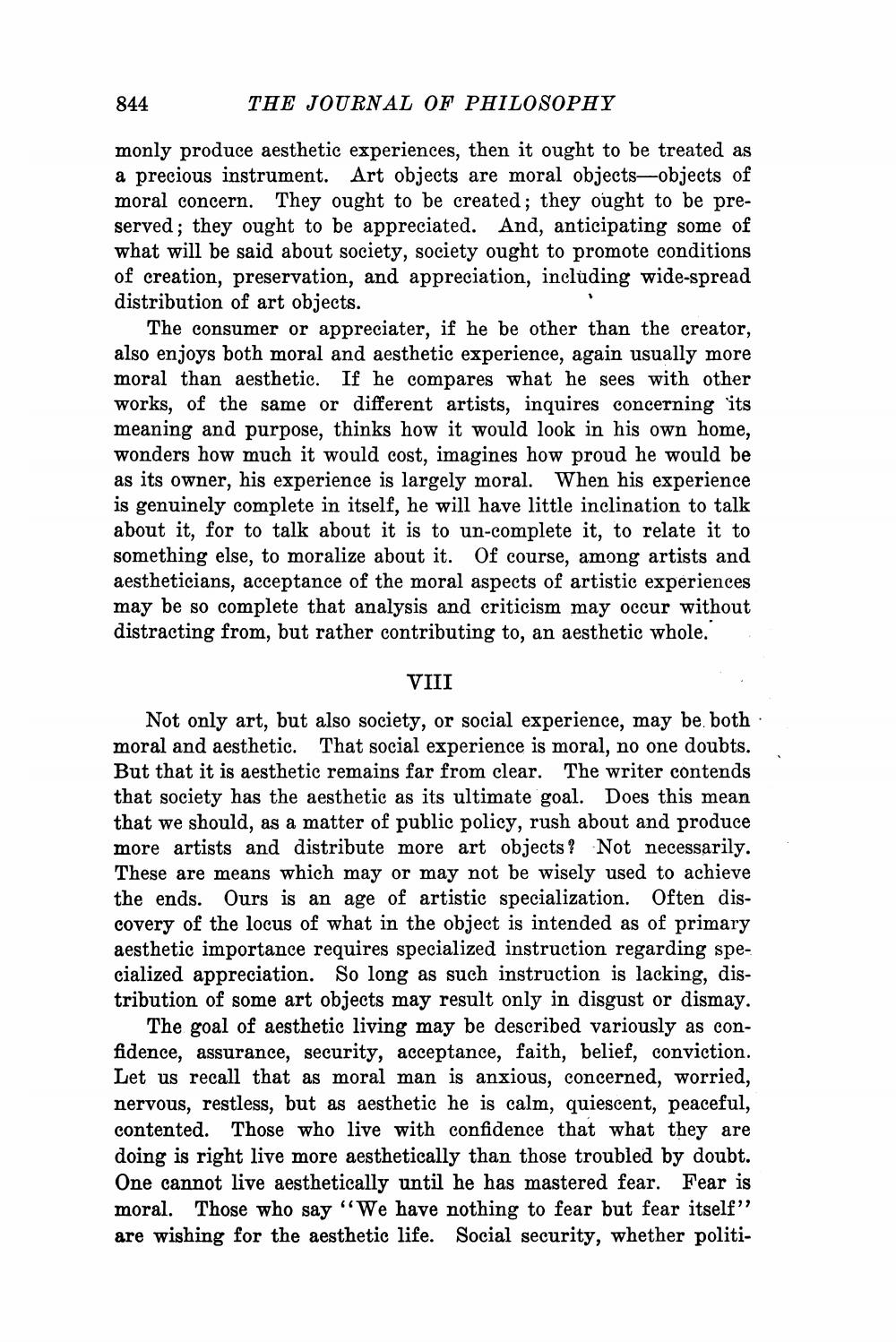Book Title: Three Essays On Aesthetics Author(s): Archie J Bahm Publisher: Archie J Bahm View full book textPage 8
________________ 844 THE JOURNAL OF PHILOSOPHY monly produce aesthetic experiences, then it ought to be treated as a precious instrument. Art objects are moral objects-objects of moral concern. They ought to be created; they ought to be preserved; they ought to be appreciated. And, anticipating some of what will be said about society, society ought to promote conditions of creation, preservation, and appreciation, including wide-spread distribution of art objects. The consumer or appreciater, if he be other than the creator, also enjoys both moral and aesthetic experience, again usually more moral than aesthetic. If he compares what he sees with other works, of the same or different artists, inquires concerning its meaning and purpose, thinks how it would look in his own home, wonders how much it would cost, imagines how proud he would be as its owner, his experience is largely moral. When his experience is genuinely complete in itself, he will have little inclination to talk about it, for to talk about it is to un-complete it, to relate it to something else, to moralize about it. Of course, among artists and aestheticians, acceptance of the moral aspects of artistic experiences may be so complete that analysis and criticism may occur without distracting from, but rather contributing to, an aesthetic whole. VIII Not only art, but also society, or social experience, may be both moral and aesthetic. That social experience is moral, no one doubts. But that it is aesthetic remains far from clear. The writer contends that society has the aesthetic as its ultimate goal. Does this mean that we should, as a matter of public policy, rush about and produce more artists and distribute more art objects ? Not necessarily. These are means which may or may not be wisely used to achieve the ends. Ours is an age of artistic specialization. Often discovery of the locus of what in the object is intended as of primary aesthetic importance requires specialized instruction regarding specialized appreciation. So long as such instruction is lacking, distribution of some art objects may result only in disgust or dismay. The goal of aesthetic living may be described variously as confidence, assurance, security, acceptance, faith, belief, conviction Let us recall that as moral man is anxious, concerned, worried, nervous, restless, but as aesthetic he is calm, quiescent, peaceful, contented. Those who live with confidence that what they are doing is right live more aesthetically than those troubled by doubt. One cannot live aesthetically until he has mastered fear. Fear is moral. Those who say "We have nothing to fear but fear itself" are wishing for the aesthetic life. Social security, whether politiPage Navigation
1 ... 6 7 8 9 10 11 12 13 14 15 16 17 18 19 20 21 22 23 24 25 26 27 28 29 30 31 32
